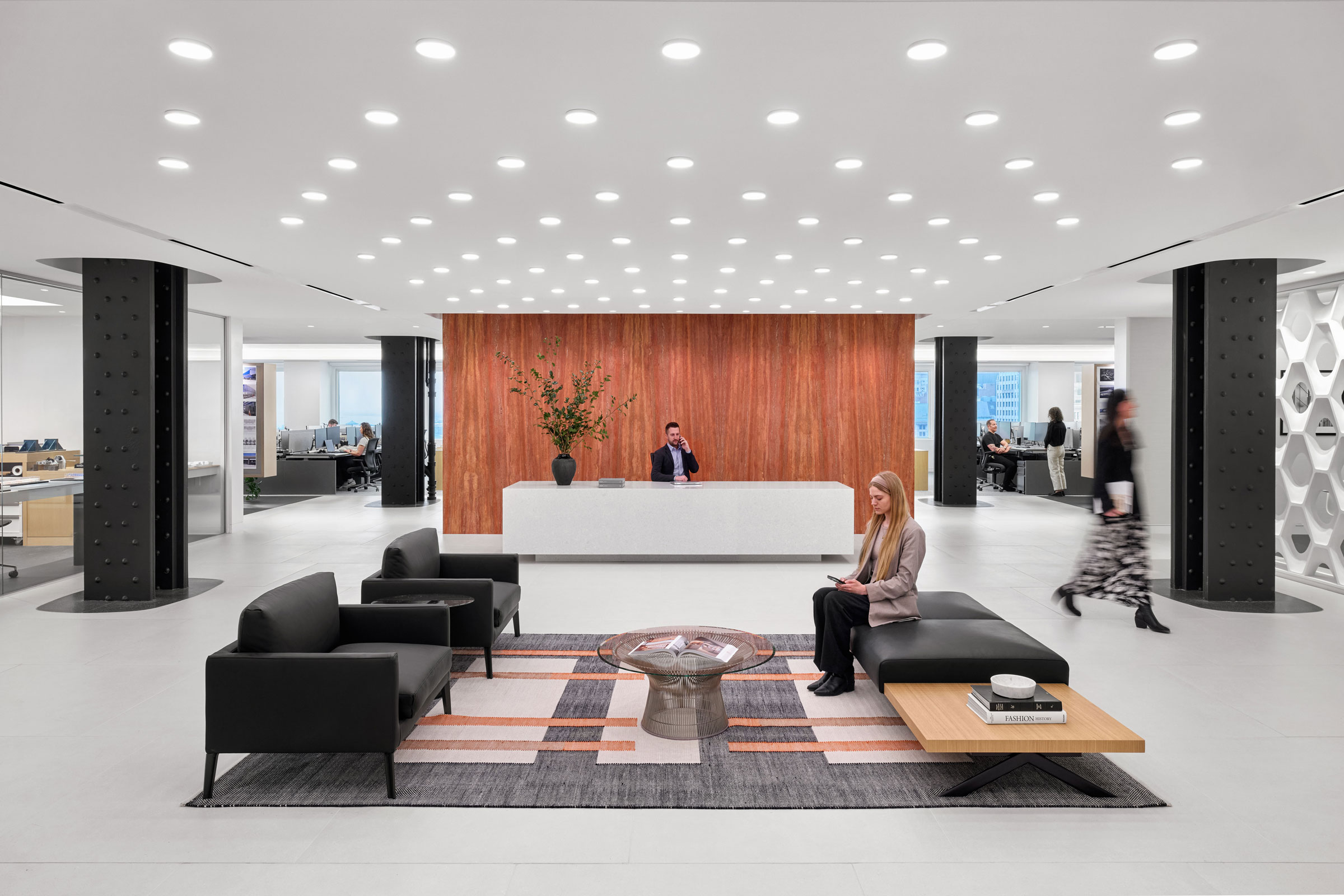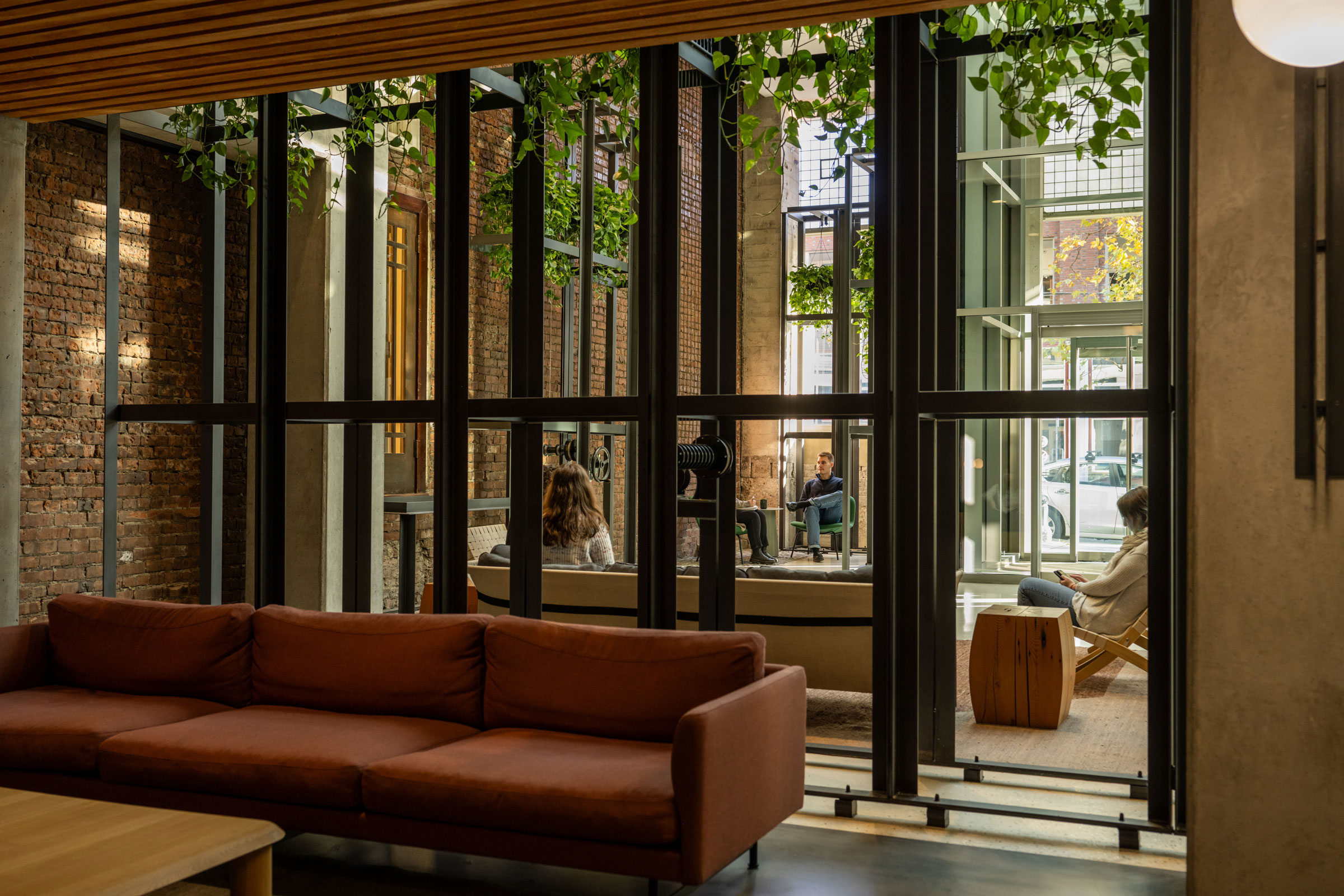Story at a glance:
- HOK’s Chicago studio celebrated 30 years in in 2025 and relocated to the iconic One Prudential Plaza, itself celebrating 70 years.
- HOK ‘s new office puts an increased focus on collaboration and transparency, with a setup more akin to a workshop.
Expansive, uninterrupted studio space, incredible city views, and an overall transparent, collaborative workshop vibe are core to the new HOK Chicago office.
HOK relocated its Chicago studio to the 14th floor of One Prudential Plaza, a 41-story building central to the city’s architectural history, in spring 2025. “This was the most innovative tower in the city of Chicago when it was built,” says Neil Schneider, who leads HOK’s interior design practice in Chicago.
The “Pru” building was the first skyscraper built in Chicago after the Great Depression and World War II. Today it has some of the city’s greatest office amenities, including a 7,000-square-foot terrace above Grant Park, multiple lounge spaces, pickleball, and more.
That’s one of the reasons HOK’s integrated team of architects, interior designers, and structural engineers chose the space for their 26,000-square-foot studio. While HOK Chicago celebrates 30 years this year, the Pru celebrates 70. The move reinforces HOK’s commitment to design excellence, environmental stewardship, and historic downtown Chicago.
“That is one of the reasons we picked this—its dedication to the city of Chicago and the innovation of the city,” Schneider says. “Not only is it an amazing view—we’re looking at what used to be rail yards and now it’s one of the most beautiful parks in the city of Chicago and one of the biggest tourist destinations. That’s value added, reminding us about the city and what it means to us.”
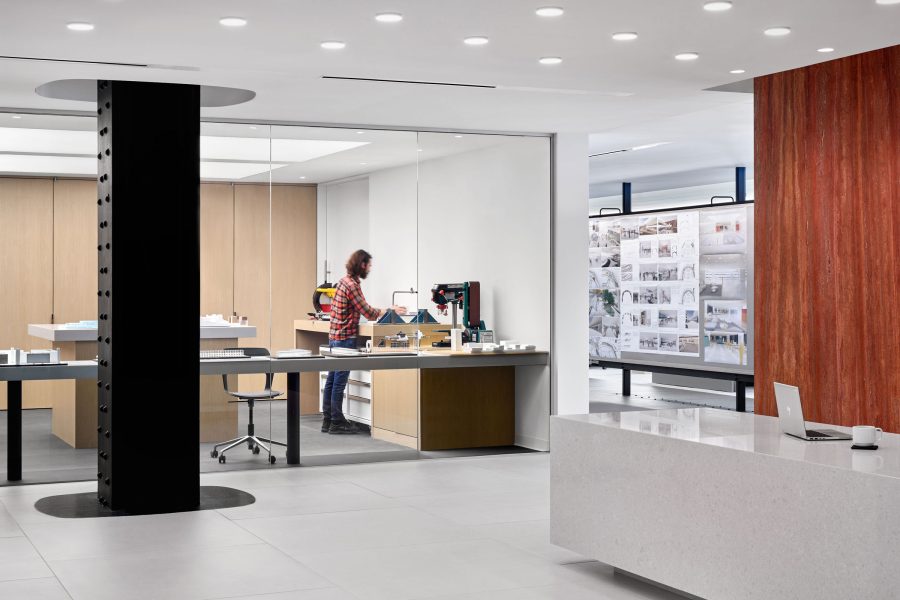
A glass wall provides a glimpse into the model shop at HOK’s new office in Chicago. Photo by Garrett Rowland, courtesy of HOK
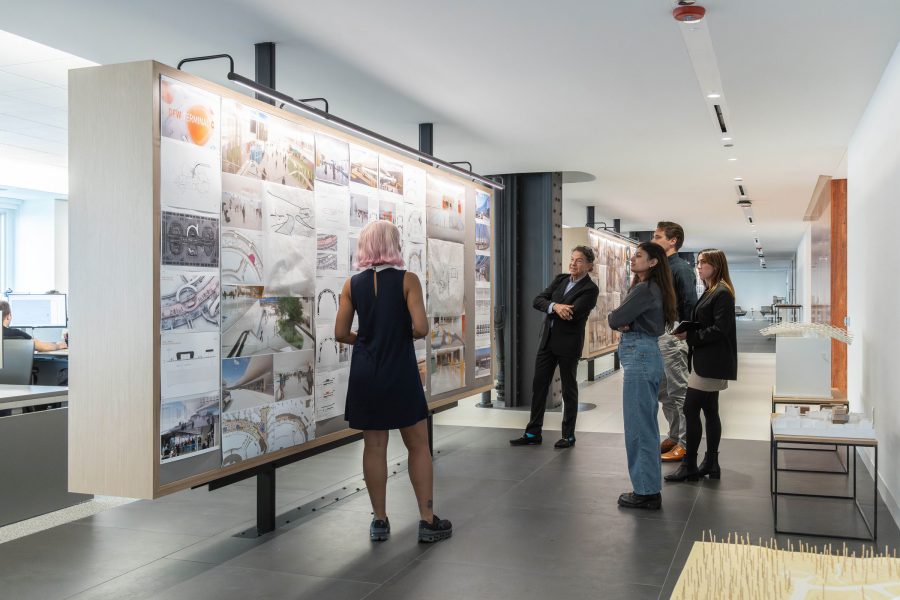
HOK Design Principal Peter Ruggiero, also a member of the firm’s global design board, reviews projects with the team. Photo by Garrett Rowland, courtesy of HOK
The new office is set up more like a workshop. Pin-up walls are dotted throughout, encouraging critique and conversation, and the model shop is front and center, accessible to anyone who wants to check out what’s in the works. Where the former office divided teams into two large spaces, the new space is much more communal; no department is siloed. Schneider says it’s all about embracing and celebrating creativity. The old office may have been larger, but the new space brings everyone together. “That’s been really nice; now everybody sees each other,” Schneider says.
The basic principles of HOK are on display at every turn in the new office. “We also didn’t over-design,” Schneider says. The sustainability strategies HOK practices on every project are exhibited in their own office, from durability of products chosen to designing for purpose. “If we’re putting something in, we’re looking at the reason behind it; it’s not just decorative. There’s no reason to be throwing all this stuff in if we don’t need it.”
Good design should hold up.
HOK wanted its Chicago office to feel timeless. As with any of its projects, they design interiors so they feel true to the company for the term of the lease or longer. “We’re not going to be doing stuff that’s trendy and gets thrown out,” Schneider says. “A lot of the stuff we build, whether it’s a hospital or airport, has to last a long time. Good design should hold up.”
The space blends contemporary elements with natural materials to create a warm, modern environment that reflects Chicago’s history, from brick detailing to exposed structural steel columns throughout. Every choice was intentional, Schneider says, and lighting isn’t over engineered but instead emphasizes reflective light. Omitting direct light gives the space a warmer, cozier feel, he says, and everyone has window access.
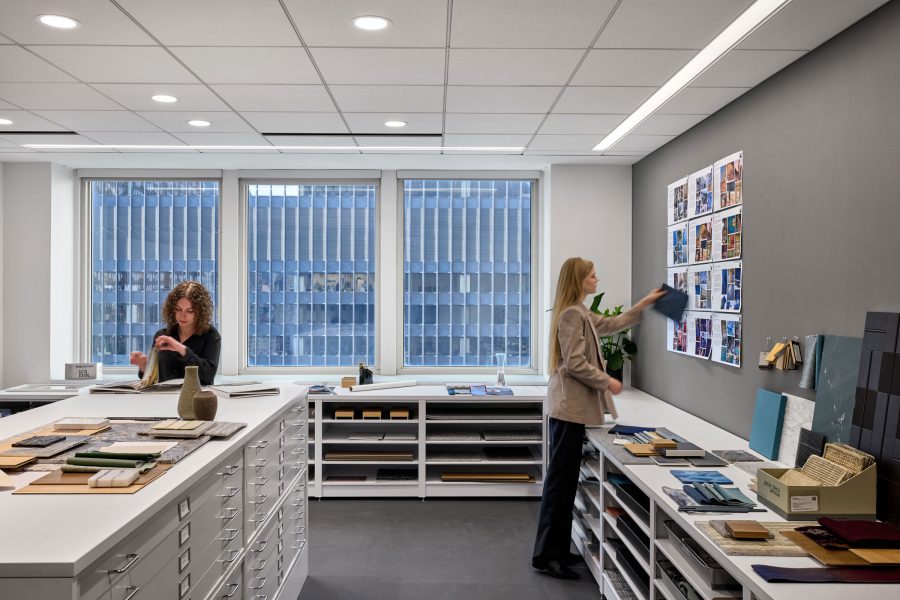
The scale of the carpets, use of natural materials, acoustic zoning, and abundant natural light all contribute to a workplace that supports the team and enhances their well-being. Photo by Garrett Rowland, courtesy of HOK
Every HOK project goes through an in-depth material tracking system to ensure the healthiest building materials available are being used, too. The HOK Chicago office was no different. The team chose FCC-certified woods, carpets made using recycled content content, and corked walls, to name a few sustainable materials. “These things have to last for 20-plus years. Those decisions are very important,” Schneider says.
The global material tracking initiative tracks embodied carbon, green chemistry, and sustainable sourcing for products specified on all interior projects. The 2024 performance for sustainable interior design materials in HOK’s projects revealed that 60% of materials had EPDs measuring embodied carbon, 84% of materials were certified as low-emitting, and 47% included recycled content. More than 80% of projects used FSC-certified wood, and 12% of materials were categorized as reused or bio-based.
Much of the furniture in the new space was repurposed from the previous tenant, including height-adjustable workstations, cafe furniture, and sofas. “We got everybody new task chairs, but really I would say 80% of the furniture here was repurposed or reused from the old company. That allowed us to do a little bit more with the space. We were able to spend more money on some of the nicer aspects because we really didn’t have to buy all this furniture.”
When they moved out of their old office, HOK invited their 130 employees to take anything they wanted that wasn’t moving with them—chairs, tables, whatever—and keep it. That’s a value add as well, Schneider says, keeping things out of the landfill and giving perfectly nice furniture to people who can use it at home. “We had a signup list, and we allowed everybody to share what they wanted from it. Some of these people are young designers who can’t afford a $800 task chair. These are nice things.”
Neuroinclusive design was a large focus of the project, with a commitment to accommodate diverse sensory needs and work styles. Everything from the scale of the carpets to acoustic zoning contributes to a more supportive workplace.
Conference rooms also incorporate technology to promote digital equity and teamwork. While the main areas of the Chicago office are bustling on most weekdays, the studio has quiet spaces like a sensory room and more focused work areas where employees can take a private call or step away for more heads-down time, too.
Schneider can often be found at his computer at the end of one row of workstations or at a window-side table in the morning, getting energized by the natural light. Sometimes he’ll take one-on-ones in the park or have lunch outside. “You don’t have to go sit in a room,” he says, noting the easy access to the park and lake, and the added bonus of free movie or music nights with teammates in the park in summer.
“As we look at workplace and office, it’s not just the building; it’s the surrounding community that affects it,” Schneider says. “It makes people want to be here, and it brings people in. The building has an energy.”

